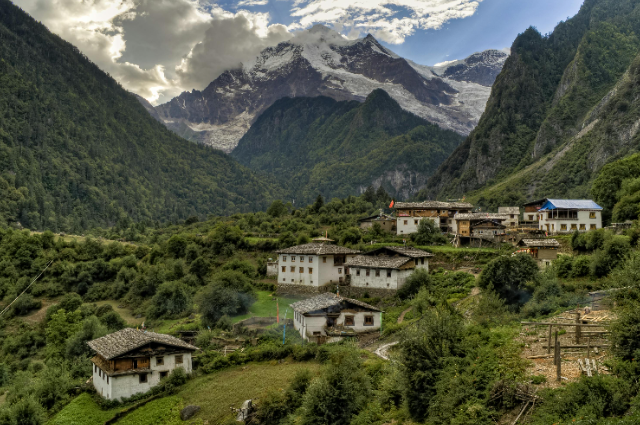
The Morning Before the Storm
The day before the river rose, the valley had worn a quiet kind of joy. Mist floated like milk over the tea gardens; children chased dragonflies between rows of green. A radio crackled somewhere, playing an old Nepali song about rain — not the fearful kind, but the kind that brings corn to life. At the roadside tea stall, Kamal Rai poured steaming milk tea into glass tumblers, his fingers stained with dust and sugar. “The clouds look heavy,” he joked to his friend Hari Limbu, who was patching a leak in his shop’s tin roof. “Maybe they’ll bless us early this year.”
In Ilam, across the border, the evening smelled of wet cardamom and wood smoke. Women hurried home before the drizzle thickened. The monastery bell rang at dusk, its echo rolling down the slopes like a gentle prayer. No one noticed how the wind had turned colder, how the birds flew lower, how the frogs had gone suddenly quiet.
Around midnight, the first gusts came — playful at first, like fingers teasing a curtain. The rain followed with soft persistence, drumming on the rooftops, then pounding harder as if trying to be heard. A farmer named Dawa Sherpa, who lived by the Kokhi’s edge, woke to a low growl beneath the storm — the sound of water dragging stones. He opened his door and saw his field gleam white under the lightning, the river swelling like a chest about to shout.
He ran outside to untie his buffalo, slipping in the mud. The animal refused to move. By the time he looked up, the river had already crossed the footpath. He shouted for his wife, but his voice was smaller than the rain. Behind him, his house cracked once — sharply — and the roof caved in like folded paper.
In the town below, a dog howled just before the electricity snapped. A red toy car floated past the marketplace, its wheels spinning silently in the floodlight of a broken streetlamp. No one slept that night — not the monks, not the tea-pickers, not even the hills. And when dawn finally came, it brought not light but the dull reflection of a valley learning how quickly water remembers its way home.
When the Kokhi broke, it did so like an announced betrayal.
At first light, the river sounded like a distant drum — a low, steady voice that pressed against the ribs of the valley. By the time the sun found the tea bushes, the voice had become a roar. Mrs. Tamang woke to the slap of water against the kitchen wall and the sudden tilt beneath her feet. She grabbed the iron pot, then her husband, then their sleeping child; the floor shuddered and a smell of wet earth and oil rose into the narrow room. Murky water lapped the threshold, carrying with it the smell of damp clay, cardamom leaves, and something metallic — the small, fierce scent of everything a family had kept for years. They climbed, breathless, to the tin roof as neighbours knocked in a rhythm that matched their hearts, and for a long, suspended minute, the valley was only the sound of water and the small, sharp prayers of people who could not remember how to cry.
“It was like the flood of 2017, only angrier,” said Hari Limbu, a retired farmer who watched the Kokhi swell from his veranda. That earlier flood had washed away nearly 160 lives across the southern plains of Nepal and displaced thousands, but the hills had been spared then. “This time the mountain itself broke,” he said, his voice trembling with a kind of ancient exhaustion.
Little did the morning know that it would swallow whole lives by dusk.
This was not an accident of a single cloud. It was a conversation between weather and human choice — heavy monsoon bursts, snowmelt higher in the catchments, slopes made thin by chainsaws, roads carved like scars. The downpour — more than two hundred millimetres in many hill pockets within twenty-four hours, and much heavier in other valleys — translated into landslides and rivers that ran furious with soil and memory. Across eastern Nepal and in the Darjeeling hills, bridges were swept, low houses became driftwood, and entire tea-garden lanes dissolved into new waterways.
The Vanishing Forests
Long before the floods found their way into homes, the hills had begun to hollow from within. The old forests — once dense with rhododendron, oak, and wild bamboo — stood like green armour around the villages, softening the fall of rain, catching stones before they could tumble. Now, where those trees once stood, the slopes wear scars of roads and quarries. From afar, they look like wrinkles; up close, they are wounds.
“When the forest was thick, the rain used to whisper; now it shouts,” said Dawa Sherpa, a seventy-six-year-old herbalist from the outskirts of Taplejung. His small hut sits where his grandfather once gathered nettle and cinnamon bark. “The trees were our umbrellas,” he says, “and our medicine. When they left, the sickness began.” Each monsoon, he ties red threads around the stumps of felled trees — not as ritual, but remembrance.
The birds too have thinned. The cuckoo, once the season’s messenger, has grown quiet. Even the cicadas — once deafening in July — hum only at dusk. The silence that follows a tree’s fall is a silence that spreads.
A study from the Department of Forests and Soil Conservation records that eastern Nepal and adjoining North Bengal have lost nearly twelve percent of forest cover in a decade. Researchers warn that with every one percent of forest loss, the frequency of landslides rises by almost sixty percent. The numbers are sterile, but their echoes are not: they sound in every loosened boulder, every brown stream that cuts across a path that once smelled of moss.
In the nearby village of Phidim, the elders recall when children would climb hilltops just to hear the rain fall — a steady rhythm that lulled the land to sleep. Now, the same rhythm wakes it violently. The forest’s departure has left not only the earth bare but also the people more fragile, their faith in the hills trembling like the roots they once trusted.
When the clouds return, the mountains no longer hum; they groan. And from that groan, disaster is born.
Downstream, Laxmi Bishwakarma, a daily-wage labourer, stood waist-deep in water where her kitchen once stood. “Everything I planted in the spring is gone,” she whispered, staring at the brown field that had fed her children. Families like hers build closest to the river because the land is cheap — or free when no one else dares to claim it. But when the river remembers its path, it remembers them first.
The Potter of Ilam
In Ilam’s upper lane, an old potter named Madan Rai watched his kiln dissolve into the earth. For forty years, he had shaped clay from the same riverbank that now ran over it. “The soil that fed my hands has eaten my home,” he murmured, standing barefoot beside the fragments of his pots. When volunteers offered him a plastic bucket, he shook his head. “I will make another kiln when the sun comes back,” he said, eyes fixed on the grey sky. His words carried no bitterness — only a strange, quiet pact with the land.
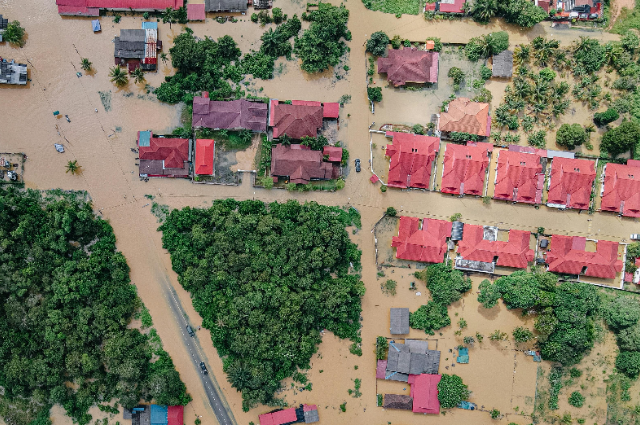
Mountains Without Roots
Over the past decade, satellite images have shown that forest cover in eastern Nepal has dropped by nearly 12 percent, while road construction has cut deep into previously stable slopes. Each tree felled loosens the soil that once held the mountain’s breath. When the first snowmelt joins the monsoon rains, the hills have no grip left. In the past five years alone, the region has seen over 800 recorded landslides — not all deadly, but each one a small rehearsal for disaster.
The first responders were not distant sirens but neighbours. In Ilam, villagers formed human chains to carry children and sacks of rice across brown torrents. In Mirik, a teacher, her sari wrapped like a life buoy, used the school’s blackboard as a ledger for the missing names that quickly turned into a map of absence. Camps sprang up in school playgrounds: tarpaulin, rows of donated blankets, a small corner where someone hung a wet alphabet chart. The blackboard still said “Welcome,” but the welcome had grown heavier with the memory of what lay beyond the camp’s thin boundary.
Pema’s Alphabet
At the Kalimpong relief camp, twelve-year-old Pema Lama sat beside a soggy alphabet chart hanging from a rope. The rain had smudged half the letters, but she still traced them with her finger. “B for Book,” she said, smiling shyly, “but my books are swimming somewhere.” The volunteer teacher beside her laughed softly. Each morning, Pema lined up the younger children and read the faded letters aloud, turning the camp’s echoing hall into a classroom again. “We will start from A when the sky forgives us,” she told them — and for a moment, everyone believed her.
Numbers followed the names. Official tallies told of dozens killed, scores missing, thousands displaced; the figures were brutal shorthand for long conversations now interrupted. The region’s newspapers, emergency bulletins and international outlets relayed death counts and rescue updates, but paper could never hold the weight of a teacher’s wet pen or a boy’s single shoe drifting downstream. Even so, the statistics matter — they are the doorway to policy and aid. International agencies and local administrations reported a spate of casualties and widespread displacement; across many districts, rain totals that would once have been measured as exceptional became the new extreme.
The Scale of the Deluge
The Nepal National Disaster Authority reported that over 50 people were killed and nearly 9,000 homes were damaged in the 2025 October floods. In the neighbouring Darjeeling hills, rainfall exceeded 260 millimetres in 24 hours — four times the monthly average. Government archives recall that a similar catastrophe struck in 2017, when monsoon floods submerged 95,000 hectares of farmland and forced 1.7 million Nepalis into temporary shelters. In 2017, the southern plains of Nepal faced what the UN called “the worst humanitarian crisis since the 2015 earthquake.” Over 1,400 schools were destroyed, 43,000 homes flattened, and damages exceeded 585 million dollars. The Koshi, Narayani, and Rapti rivers breached their embankments, cutting off over 35 districts. Nearly half of the Terai region lay under water for weeks. Eight years later, the 2025 floods arrived with eerie resemblance — different geography, same despair. This time, the hills that once watched the plains drown found themselves under siege. Experts at the Department of Hydrology and Meteorology note that extreme rainfall events across the Himalayan arc have increased by nearly 38 percent in just a decade, turning what was once called a freak season into a frequent warning.
Each new event now arrives sooner than the last, leaving the country less time to recover.
What made this flood more than a weather event was the way the landscape had been prepared — for convenience, for a map of progress. Forests that once held the soil with roots and history were thinned for timber and construction; slopes were carved for roads and resorts; floodplains were treated as vacant lots. The result: rain that used to be absorbed is now translated into speed and force. Experts and environmental writers have for years flagged how construction and land-use changes in the Himalayan belt amplify runoff and landslide risk; recent reporting has tied the region’s intense, short bursts of rain to both local land changes and global climate shifts.
In Sindhupalchok district, a hillside that had once been terraced for maize collapsed overnight, killing 17 people and blocking the highway to Kathmandu for three days. The Geological Department has recorded over 1,200 major landslides across Nepal in just the last three monsoon seasons — many linked to unstable construction zones. The mountains, as locals say, are “sliding while standing.”
When the Sky Remembers Too Much
Scientists at Tribhuvan University and the Indian Meteorological Department trace this pattern to a warming atmosphere that now holds more moisture than ever before. Each degree of temperature rise means seven percent more water in the air — and when it releases, the downpour is no longer seasonal but explosive. Add to this the reckless mining of riverbeds for sand, the blocking of natural drainage with concrete, and shrinking forest buffers — and the result is an overloaded sky over a wounded earth.
“These are not just monsoons,” says hydrologist Dr. Meera Thapa, “they’re memory events — the sky releasing what it has stored from our neglect.” Her team found that in the last decade, rainfall intensity over short periods has doubled in the eastern Himalayas, while soil absorption has halved. The numbers explain what the villagers already know by instinct: that the clouds have grown impatient, and the mountains, tired of holding their grief, have begun to let go.
And beneath those statistics lies a simpler truth — that for every charted millimetre of rain, there is a story of loss that no graph can capture.
The human toll was both immediate and slow. In the immediate aftermath, families lost homes, harvests and the small savings hidden in lockboxes and kitchen drawers. Fields lay under silt; a month’s harvest vanished overnight. A report from the region’s recent large floods reminded us that tens of thousands of hectares of farmland have been ruined in similar events — the loss of food, wages and future seasons is not easily tallied.
Hari and Mina’s Field
Near Jhapa, Hari and Mina Gurung stood before what had once been their paddy field — now a silver lake dotted with uprooted bamboo. “It will take three harvests to pay the debt for this year’s seed,” Hari said, his voice dull with fatigue. Mina lifted a handful of silt from the water and let it run through her fingers. “Even the soil has forgotten our names,” she whispered. Later that week, they joined a cooperative that teaches flood-resilient farming. “We will plant again,” she said, “because the river will not win twice.”
Yet to speak only of loss is to ignore the other current that moved through those hills: a fierce, improvised compassion. Monks ferried rice in clay pots; youth groups knotted bamboo into emergency footbridges; a baker in a town near the river handed loaves to a mother without asking for names. NGOs and the Red Cross arrived with tents and medicines, but the first sheltering hands were almost always those of neighbours. Stories of people lending the last pair of shoes or sharing the only dry blanket, threaded through weeks of relief efforts and quiet, continuing work.
There are structural lessons to be learned here. Early-warning systems worked in some pockets and failed in others; embankments held in places and collapsed in others; resettlement plans were imagined but not implemented in most of the worst-hit hamlets. Preparedness is not only technical: it is social. It is knowing which families have no truck to evacuate, which elders cannot climb steep paths, and which fields are the only source of income for months to come. Responses that mix engineering with the knowledge of local life — raised platforms for shelters, planned relocation with livelihood replacement, and community drills before the rains — make a difference.
We can also see the inequality that each flood exposes. Those who lived closest to the riverbank did so because land away from water was expensive or reserved; those houses were often the most precarious. Recovery is slower for households without formal land titles, without access to credit, and for those dependent on daily wages. Disasters do not strike evenly; they widen existing lines of vulnerability.
Months after the waters withdraw, recovery unfolds unevenly. Wealthier tea-estate owners rebuild within weeks; labourers wait months for compensation that may never come. Aid often flows fastest to where the roads survived, not where they were lost. The real flood, many say, is not of water but of waiting.
The Women Who Stayed
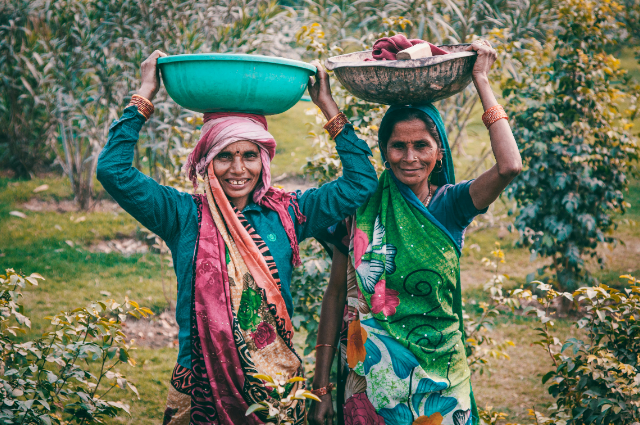
When the men left to search for work or rebuild the roads, it was the women who stayed — in the water, in the silence, in the long wait for news. They became both the anchors and the architects of what little remained. In the flood camps of Jhapa, smoke curled from makeshift stoves at dawn as women knelt to light fires beneath dented pots. They cooked not only for their own families but for anyone who wandered in hungry.
“We cooked for everyone first,” said Sita Gurung, a 28-year-old mother of two. “Only after the line ended did, we eat.” Her sari was patched from old curtains, her bangles made of bottle caps. Yet when children cried in the camp, it was her lullabies that softened the air. She had lost her home and her husband’s small shop, but not her rhythm — that steady pulse of care that refused to drown.
In a nearby shelter, a group of women started a small circle beneath a blue tarpaulin. They gathered every evening with notebooks and pens salvaged from the mud. What began as roll calls of the missing soon turned into plans for rebuilding. They listed what they could teach each other — sewing, weaving, tending goats. One woman, Maya Limbu, proposed a shared savings box. “If we wait for help,” she said, “we will grow old before the river forgets.” They named the box Punarjanma — “rebirth.” Within weeks, it had enough coins to buy seeds for the next planting.
The United Nations Office for the Coordination of Humanitarian Affairs later noted that nearly sixty percent of families displaced by the 2025 flood were headed by women. Yet most of the official photographs captured only the rescue teams, not the hands that boiled rice, washed wounds, and rebuilt walls. “We don’t shout like sirens,” said Maya. “We mend quietly.”
At sunset, the camps would glow with tiny lamps set on tin plates. Women hummed as they worked, their voices carrying over the damp fields. Some said the hills listened differently when women sang — as if the land, too, needed to be reminded of patience.
When the sky cleared, it was these women who swept the debris from classrooms, stitched new curtains from old tents, and planted vegetables beside broken fences. They did not call it recovery. They called it another morning.
Still, there is a hopeful architecture in the rubble: programmes that pair short-term relief with vocational training, local tree-planting drives that seek to put roots back into weakened slopes, and small early-warning projects that connect hamlets with mobile alerts. When engineers draw plans for new embankments, when NGOs teach alternate livelihoods and when local councils plant saplings where landslides gouged the soil — these are small acts of re-weaving. They cannot erase the loss, but they can change the terms of the next rain.
Listening to the Land
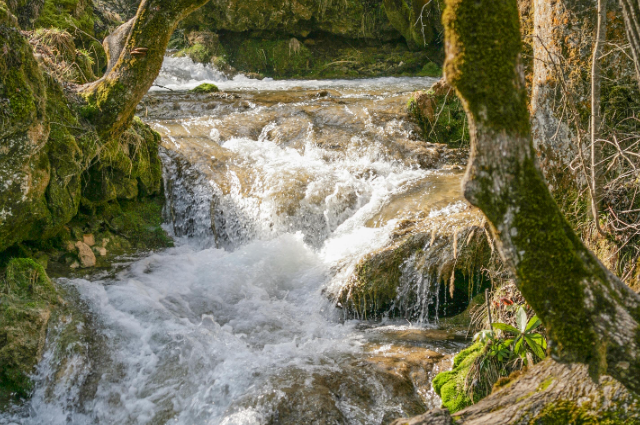
For centuries, the people of Nepal have believed that rivers carry not just water, but memory. Each bend holds stories whispered by those who lived and lost along its banks. When the Kokhi rages, the elders say it is not angry — it is remembering. In the evenings after the flood, women lit oil lamps beside the river’s edge, murmuring old chants for forgiveness, not fear. “The river was our mother,” said eighty-year-old Ang Diki Sherpa from Ilam. “We forgot to feed her; now she has reminded us that she is alive.”
Scientists, too, speak of memory — in sediment patterns, in temperature graphs, in rainfall data. A recent study from Tribhuvan University shows how the soil in eastern Nepal has grown less absorbent each year, its pores clogged with silt and plastic waste. The mountains, once like sponges, have turned to stone. “The land is tired,” said hydrologist Dr. Meera Thapa, “and tired land lets go easily.” Her team’s maps glow in shades of red and brown — not anger, but warning.
Yet between the elder’s myth and the scientist’s map, there lies a truth both understand: the earth listens before it reacts. Farmers in the high villages still read the tilt of bamboo leaves to predict rain, and shepherds place their faith in the behaviour of ants before the monsoon. “The sky and soil talk to each other,” says Dawa Sherpa, the herbalist who once lived beneath the forest. “We were too busy talking to ourselves.”
After the flood, some temples revived old rituals once thought forgotten. On the banks of the Kokhi, monks floated small butter lamps down the current — each flame a promise to walk lighter upon the land. Students helped clear the silt from the irrigation channels, laughing as they worked. For a moment, it felt less like repair and more like reconciliation.
In a world quick to measure loss by statistics, listening to the land is an act of humility. The murmurs of the river, the silence of the forest, the cracked rhythm of rain — each speaks, if one pauses long enough. The lesson is not hidden in any scripture or survey. It flows underfoot, in the same currents that once destroyed and now sustain. To hear it is not to master nature, but to remember we were never apart from it.
Lessons from the Rain
If this flood was a stern teacher, its lesson is double-edged. It shows the consequences of treating living geography as merely a space to be filled and shaped. It also shows what people do when an urgent sky demands everything: they share, they improvise, and slowly, carefully, they begin again.
In a world where valleys like Ilam and Mirik receive bursts of rain both heavier and more frequent, we must choose which future to build. Do we rebuild the same patterns — houses where rivers once flowed, roads that slice slopes thin — or do we build differently? The river will not forget the paths we choose. In a country that contributes only a tiny fraction of global emissions yet bears the swelling consequences of a warming world, the fury of the flood speaks not just of weather but of a fragile, shared balance we have the power to respect or ignore.
Scientists warn that Himalayan rainfall extremes could rise by 25 percent by 2050, even if global emissions slow. Yet amid the predictions, there are lessons of hope — communities adopting rain-harvesting ponds, planting bamboo belts, and rebuilding homes on raised plinths. In every act of preparation, there is defiance — a quiet statement that the future need not drown in the past.
Rebuilding Tomorrow
When the last floodwater drained from the valley, it left behind not just silt but questions. How do you begin again when the map of your world has changed? The answer, it seemed, began quietly — with hands, not headlines.
In the first week after the disaster, classrooms reopened under tarpaulin roofs. Children sat on mats woven from rice sacks, scribbling on damp notebooks that smelled faintly of smoke. A teacher, her chalk clutched like a wand, drew mountains on a salvaged blackboard. “This is where we live,” she said, tracing each peak slowly, “and this is how we will rise.” The children nodded, their eyes reflecting sunlight through the holes in the roof.
On the riverbanks, men and women worked shoulder to shoulder, stacking sandbags where the embankments had split. Some were farmers; others, newly trained volunteers. “The soil will listen if we speak to it gently,” said a young agronomist from Biratnagar who had returned from the city to help his family. He introduced the villagers to flood-resistant rice and millet varieties — crops that could survive even when the sky decided otherwise. The fields, once bruised with mud, began to sprout green again.
The youth, too, found new purpose. Groups from the local colleges used drones to map landslide-prone zones, marking them with bright flags. “We can’t stop the rain,” said twenty-year-old Sonam, “but we can see where it will fall hardest.” The data they gathered would later guide relocation plans for entire hamlets. It was the first time the community felt that technology was not something distant, but something that listened.
Across the hills, rebuilding took on many forms. Carpenters shaped planks from fallen trees, creating furniture for relief camps. Tailors stitched new school uniforms from fabric donated by nearby towns. A group of monks and nuns planted saplings along the ravaged slopes — rhododendrons, pines, and wild mango. “Each root is a prayer,” said Lama Tsering, pressing soil around a sapling. “If they grow, we will too.” Within weeks, the once-raw hills began to blush green again.
The government’s promises arrived slower than the people’s resolve. Funds trickled in, policies were debated, and experts visited briefly before leaving. But the villages had already learned to depend on themselves. Women’s cooperatives began building raised storage sheds for grain; school committees drafted simple evacuation plans. What had once been seen as small acts of survival became the blueprint for the next monsoon.
Scientists now visit these communities not just to study damage, but to learn adaptation. Hydrologists from Tribhuvan University have begun collaborating with local elders, combining satellite data with oral memory — mapping where floods “always return,” as the villagers say. “The past speaks clearer than the forecast,” one researcher admitted. Together, they designed new drainage channels that follow old river memories rather than fight them. The result was modest but miraculous: in the following season, when heavy rain struck again, the water veered away from the rebuilt homes.
And amid the practical repairs, art found its way back too. In Mirik, a painter used silt and ash to create murals on the school walls — swirling images of rivers, trees, and stars. Children added fingerprints to form clouds. “We will not paint the flood,” the artist said softly. “We will paint what stays after.”
By the end of the year, when the valley bloomed again with cardamom flowers and butterflies, the people had written a new rhythm into their days. They no longer feared the river’s voice — they listened to it. The sound of flowing water had changed; it no longer roared, it breathed. And though the memory of loss would never vanish, it now carried something gentler within it — the hum of survival turning slowly into the melody of hope.
The Quiet Victory
When the water recedes, what remains are not only stones and twisted tin, but the stories people tell one another as they put one foot in front of the other. Those stories — of hands held tight on a tin roof, of a teacher chalking names on a damp board, of a neighbour who would not leave another behind — are the small scaffolding of recovery. They teach a different kind of mapping: the geography of care. And if we listen, perhaps the next time the sky forgets mercy, fewer lives will have to remind us how to forgive.
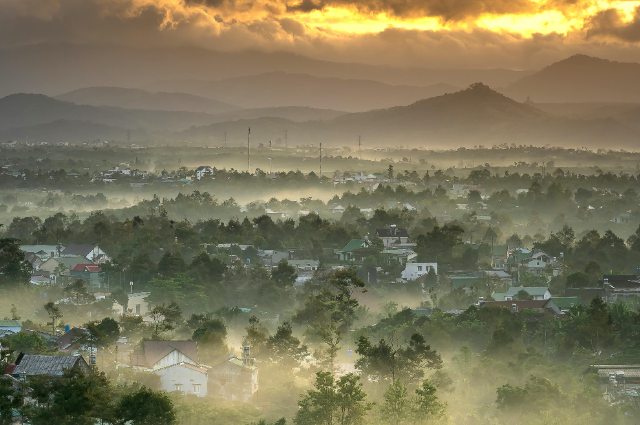
Footnotes of Memory
Weeks later, when the news moved on and the valley fell silent again, someone found a notebook washed up near the Kokhi’s bend. Its pages were wrinkled, its words half-dissolved, but one line was still clear: “Next time, build higher.” No one knew who had written it. Perhaps a farmer, perhaps a child. Perhaps the river itself.
In another village, a broken wall bore faint chalk marks — tallies of names once written during the chaos of the flood. Rain had blurred them into ghostly lines, as if the missing had turned into clouds. The teacher who wrote them returned weeks later to rewrite each name, not to mourn, but to remember. “Memory,” she said, “is how we keep the water from winning.”
At night, when the hills grow quiet again and the new saplings tremble in the wind, the villagers say they still hear the Kokhi murmur. Not a roar, not a threat — just a whisper, like the sound of a page being turned. It reminds them that every storm writes its own story, but it is the living who choose how it ends.
And so, beneath the same restless sky, life begins again — a little higher, a little wiser, and infinitely more tender than before.
